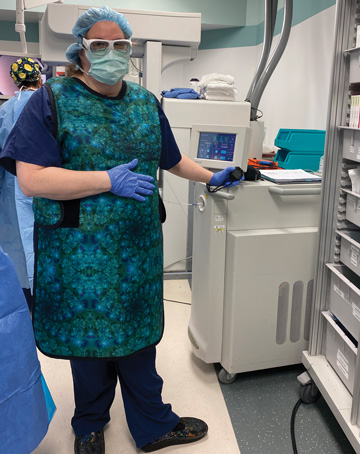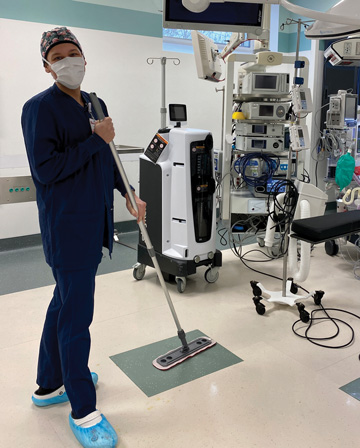It’s common to back-burner an issue that you know needs addressing when a repeat occurrence has not happened for a while. But after a handful of slips, trips and falls incidents last year at our busy community hospital, we knew we could no longer look the other way. One employee who was taking specimens to the lab slipped on a wet spot when they stepped out of the elevator. Another employee tripped over a pillow that had fallen on the floor in the OR. One nurse was behind a surgical technologist during a room turnover and they both moved in the same direction at the same time, causing the nurse to trip over the tech’s foot and fall. She suffered a large hematoma on her knee and elbow and paid a visit to employee health and an orthopedic surgeon. Luckily, she did not require further medical treatment, but it took a while for the swelling to resolve.
With so much recent focus on the pandemic and infection prevention, a slip or trip injury can seem trivial, but they are more common than you might think. According to the U.S Bureau of Labor Statistics, slips, trips and falls were the second most common cause of lost-workday injuries in hospitals in 2009. In 2020, 447,890 nonfatal occupational injuries and illnesses were reported in the healthcare and social assistance industries.
Slips, trips and falls are preventable, but not without effort. These are some of the methods and practices that we utilize to help keep our staff safe and upright.
.svg?sfvrsn=be606e78_3)


.svg?sfvrsn=56b2f850_5)